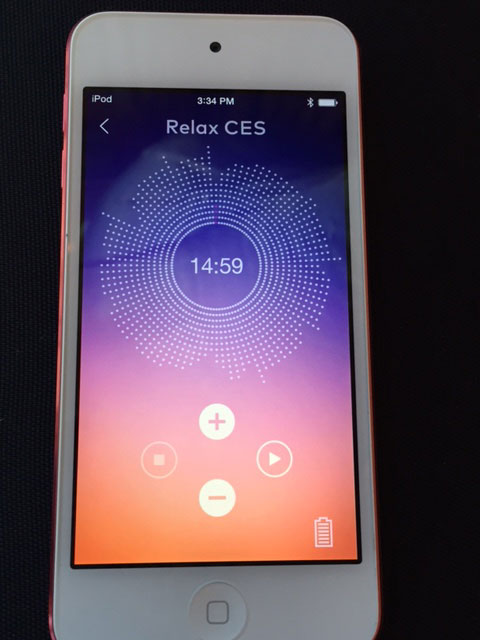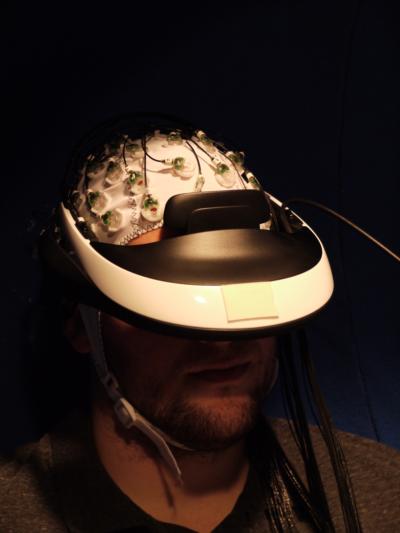When I started this blog in 2012 friends and family thought I was crazy. But I knew something interesting was happening and now that we’re seeing all this VC money flowing into the space it’s obvious something IS happening. Still too early to tell what will become of all this, but a single ‘killer app’ (provable, repeatable, without side-effects) could launch tDCS, or another form of non-invasive brain stimulation, into the mainstream.
I wonder if Thync’s announcement took Halo Neuroscience by surprise (probably not). Considering how simple a tDCS device is to make, it will be interesting to see if add-ons can make individual devices truly patentable – I’m thinking built-in feedback and monitoring etc.
And this on Thync’s About page from Marom Bikson! This is interesting in itself because Dr. Bikson has been critical of efforts to commercialize tDCS in the consumer space (especially the foc.us device, but generally cautious)
“Dr. Jamie Tyler has built an extraordinary team of scientists and engineers at Thync who are creating consumer devices that achieve a level of neuromodulation performance, safety, and ease-of-use that is a categorical advance for the field.”
Looking into the list of scientific publications Thync lists on their site, I would have to conclude that perhaps their focus is more on transcranial pulsed ultrasound (TPU) than tDCS. And look! DARPA has also been funding research in TPU. [Update: Thync confirmed their first device will be tDCS based.]
Thync @thync
@DIYtDCS Thank you for the inquiry. We have deep knowledge of both. Our first product will be around #tDCS.
Here, from Thync’s website, they lay out the technological foundation of their ‘Vibes’ product.
Founded on decades of research and results using transcranial pulsed ultrasound (tPU), transcranial direct current stimulation (tDCS) and other transcranial electrical stimulation (tES) methods, Thync elevates these breakthroughs in neuroscience to a new place in lifestyle technology.
We have developed proprietary neurosignaling waveforms that target neural pathways via a mechanistic triad:
• BRAIN: prefrontal and frontoparietal brain regions
• NERVES: sensory fibers of cranial nerves
• MUSCLE: neuromuscular fibers
And…
A secure Bluetooth Low Energy network enables users to control and tune neurosignaling waveforms to optimize their experience while shifting mindset in a personalized manner.
Aha! From a Business Week article tweeted by Marom Bikson, (implying their device, at least initially is more likely to be tDCS based):
Thync pursued Tyler’s ultrasound techniques for the first year, until the founders learned about studies conducted at the Wright-Patterson Air Force Base in Dayton, where researchers had tried to improve pilots’ cognitive abilities with electrical stimulation. Reasoning that the electrical method, with its rapidly improving science, offered a safer, quicker route to the market, Thync switched gears. Since then, the company has worked to shrink the electrodes and develop its algorithms to produce a reliable, comfortable experience.
For the past 18 months, Thync has tested its “vibes” on more than 2,000 people in clinical trials at its Boston office and the City College of New York. Some subjects didn’t respond to the treatment at all—it doesn’t work for everybody—but the company reached a milestone when two out of three respondents started to regularly say the sensations were more powerful than the placebo effect. “Most people rate it as a moderate to strong response,” Goldwasser says of the energy vibe, “or at least as good as a few cups of coffee.”
Prof. Bikson is co-director of Neural Engineering at The City College of New York so it stands to reason he was involved in the testing. When I asked him via Twitter he said:
Excited to see the results of these tests. Also, as long as we are heading into the consumer space, it’s great to have Dr. Bikson involved.
The product is set to launch in 2015. I’ll be following closely…
Update 10/12/14 Following up on Mika’s observation (see comments)…
P.S. Thync hit it out of the park with the naming of their company/domain/Twitter handle.
See Also:
Thync Lets You Give Your Mind a Jolt
Thync’s Wearable Won’t Just Measure Your Mood, It Will Fix It – IEEE Spectrum.
Thync to Launch First Mood-Altering Wearable With $13M Led by Khosla
Thync Has Raised $13M To Change Your Mood With Ultrasound Waves (And Electricity)
Wearable tech to hack your brain | CNNTech 10/23/14

 The 20 minutes are up sooner than I imagined. I peel the device from my forehead, remove the underlying disposable electrodes, replace my glasses. The difference, I must admit, is palpable: Everything seems more finely etched, crisper. I notice more details in the world around me, and the sense of dullness that three days spent listening to press pitches from moribund industry giants has draped over my brain seems to have been peeled away. Andrew’s experience is less dramatic—he says he definitely feels more relaxed, but you can’t get less anxiety than zero. The up elevator, meanwhile, doesn’t have the same ceiling.
The 20 minutes are up sooner than I imagined. I peel the device from my forehead, remove the underlying disposable electrodes, replace my glasses. The difference, I must admit, is palpable: Everything seems more finely etched, crisper. I notice more details in the world around me, and the sense of dullness that three days spent listening to press pitches from moribund industry giants has draped over my brain seems to have been peeled away. Andrew’s experience is less dramatic—he says he definitely feels more relaxed, but you can’t get less anxiety than zero. The up elevator, meanwhile, doesn’t have the same ceiling.
 Thync
Thync